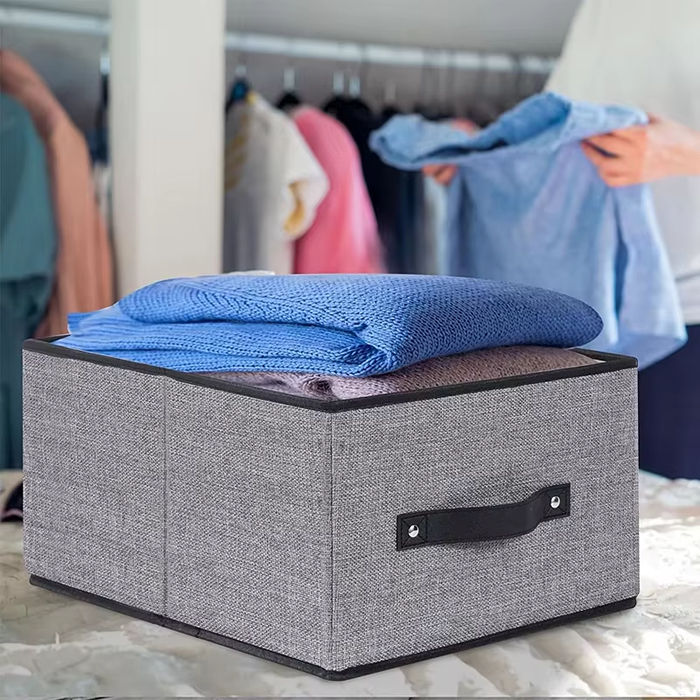As the temperatures rise and the days get longer, it’s time to pack away your winter gear and make space for your spring and summer items. Seasonal storage is an essential part of home organization, especially when it comes to winter gear. Properly storing your cold-weather essentials not only frees up valuable closet space but also helps extend the life of your items, ensuring they’re ready for the next season. Here’s a simple, step-by-step guide to storing your winter gear efficiently.
Before you start storing your winter items, it’s important to assess what you have. Take everything out of your closet or storage bins and carefully go through each piece. Sort them into three piles: keep, donate, and discard.
Keep: Only hold on to items that are in good condition and still fit.
Donate: If you have gear that you haven’t worn in years or that no longer fits, consider donating it.
Discard: Worn-out or damaged items that can’t be repaired should be thrown away.
This decluttering process will give you a better idea of what you truly need to store and will make the next steps much easier.

Now that you’ve decluttered, it’s time to clean your gear. Proper cleaning ensures that your winter items stay fresh and last longer.
Coats and Jackets: Follow the care label on your outerwear. Some items may require dry cleaning, while others can be machine-washed. Make sure to clean them thoroughly to remove dirt, sweat, or oils before storing.
Boots and Shoes: Wipe down boots with a damp cloth and let them dry completely. If necessary, polish leather boots to protect them from the elements.
Hats, Gloves, and Scarves: Wash scarves and hats as directed, and make sure gloves are clean and dry. Proper cleaning removes any odor or stains that could set in over time.
Always ensure that everything is completely dry before storing it to prevent mold or mildew growth.
Choosing the right storage containers is crucial to keeping your winter gear in top condition. Here are a few tips:
Storage Boxes & Bins: Use airtight bins or boxes to protect your winter gear from dust, dirt, and moisture. Opt for clear containers so you can easily identify the contents. If possible, use bins with lids to prevent exposure to air.
Vacuum-Seal Bags: For bulky items like coats, sweaters, or blankets, vacuum-seal bags are a great space-saving option. These bags compress the items, helping you save precious storage space.
Drawer Organizers: For smaller items like gloves, scarves, or hats, use drawer organizers. These will keep everything neatly separated and easy to find when you need it next season.
Label Everything: Label each container with the items inside to make it easy to locate your winter gear when the cold weather returns.

Choosing the right storage location is key to ensuring your gear remains in good condition.
Temperature-Controlled Space: Always store winter gear in a cool, dry, and dark area to avoid damage from heat, moisture, or direct sunlight.
Avoid Attics and Basements: These areas often have fluctuating temperatures and humidity levels, which can damage your clothing and accessories.
Under-Bed Storage: If you’re tight on closet space, consider storing winter gear in under-bed storage bins. This keeps your gear out of sight while still easily accessible.
Closet Shelving: If you have shelf space in your closet, this can be an ideal place for bins or boxes. Just be sure to store your gear in a way that doesn’t crush or misshape the items.
To make the most of your closet or storage room, consider the following:
Stackable Bins: Stackable storage boxes or bins allow you to use vertical space efficiently. They are especially useful if you’re working with limited floor space.
Hanging Organizers: For smaller accessories like scarves or hats, use hanging organizers. These are easy to install in your closet or on the back of a door, keeping things organized and visible.
Under-Bed Storage: For bulkier items, such as large winter coats or boots, consider under-bed storage. Use vacuum-sealed bags or stackable bins for this purpose to save space.
Shelving Units: If you have the space, install shelves in your closet or storage area specifically for storing winter gear. This will help keep everything neatly organized and easy to access.
While some winter items will be stored away for months, you’ll likely still need quick access to a few essentials, like hats, gloves, or scarves. To keep things organized:
Easy Access: Store frequently used items at eye level or in a place where they’re easy to grab. For example, place gloves or hats in an accessible drawer or bin.
Label Everything: Label your storage bins and boxes so you can quickly find what you need when the weather changes.
Rotate Seasonal Gear: As you pack away your winter gear, take the opportunity to rotate out your summer items. This seasonal transition helps you stay organized and makes the gear you need readily available.
Even while storing your gear, it’s important to ensure proper airflow to prevent moisture build-up. Here are a few tips:
Avoid Moisture: Keep your storage area well-ventilated to reduce the risk of mildew. If you’re storing boots, leave them slightly unzipped or open to allow air to circulate.
Dry Thoroughly: Ensure all gear is completely dry before storing it, especially if it’s been worn in the snow or rain. Damp items are more likely to develop mold or mildew when stored improperly.
Properly storing your winter gear at the end of the season is essential for maintaining the quality of your items and maximizing closet space. By following these tips—decluttering, cleaning, choosing the right storage containers, and organizing your space—you’ll be able to store your winter gear efficiently and keep it in great condition for next year. With just a little effort now, you’ll be ready for the cold weather when it returns, without the hassle of last-minute organizing.